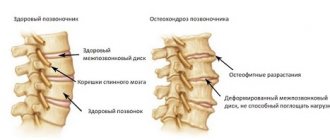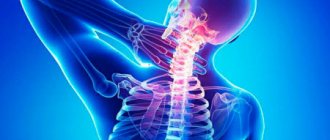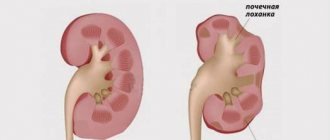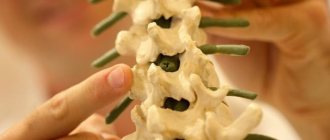Sevmassage » For pain in the lumbar region
Let's start with what not to do.
It is strictly forbidden to take painkillers. The reason is easy to explain.
Pain is always a protective reaction of the body, which performs two main and very important tasks. First: to report that something is wrong in the body and at the moment he cannot cope with it himself (that is, perhaps some kind of outside help is needed). The second, no less important function: to protect an already damaged area from further damage. And if a person drinks a painkiller, then nothing prevents him from making that movement, which can ultimately lead to severe dysfunction of the spinal motion segment, disc herniation, or even more serious consequences. It is especially dangerous to relieve pain in the lumbar region with the help of tablets. If you take painkillers and then make some awkward movement, you may end up with even greater pinching of the spinal nerve, and the resulting pinching will, in turn, provoke or intensify pain in the leg.
Causes of lower back pain
The most likely cause is various diseases of the spine - osteochondrosis, spondyloarthrosis, radiculitis. However, there are other factors:
- Pathologies of internal organs;
- Kidney diseases, gastrointestinal tract, urological problems;
- Excessive stress on the spine;
- Oncological diseases of organs located in close proximity to the lower back
Diagnosis for lower back pain
If alarming symptoms appear, you should immediately consult a doctor to rule out life-threatening conditions - they are very rare, but they do happen. Diagnostics involves several stages:
- General blood test and biochemistry - will show the presence/absence of an inflammatory process in the body
- X-ray diagnostics – aimed at studying the condition of intervertebral discs
- MRI of the lumbar spine - will allow you to closely examine the spine, spinal canal, and determine the presence of stenosis
- Ultrasound is a modern method that allows you to identify diseases without the use of harmful radiation.
Based on the results of the research, the patient will be offered a consultation with a highly specialized specialist - a neurologist, vertebrologist or chiropractor, who will prescribe further treatment.
Note!
Treatment for lower back pain is most often therapeutic. All procedures are performed only in the area of the source of pain. Surgery is indicated only when there is a real threat to life.
Injections
For acute muscle pain, doctors at the Yusupov Hospital prescribe intramuscular, intravenous, and injections of painkillers performed as blockades. Neurologists at the Yusupov Hospital are fluent in blockade techniques. Novocaine and lidocaine injections are made into trigger points. They help relax and restore the tone of the back muscles. When performing a paravertebral blockade, the drug is injected along the lower edge of the rib to points located near the spine.
Painkillers are administered through a catheter into the intervertebral space. All types of injections for back pain are performed with high quality by specialists from the rehabilitation clinic. By calling the Yusupov Hospital, you can get treatment for back muscle pain at an affordable price. You will be offered a special rehabilitation program, thanks to which you can get all the necessary procedures and save money.
Lower back pain in women
Among the fair sex, lower back pain is quite common. It can be caused by both musculoskeletal disorders and concomitant diseases, including gynecological ones.
Note!
According to statistics, back problems in women are 10% more common than in men. However, the number of requests for medical help (among women) is 5% less
Causes of back pain in women:
- Problems with the spine - scoliosis, kyphosis, osteochondrosis, protusions and herniated intervertebral discs, caused by increased stress, sedentary work, hypothermia, as well as genetic predisposition
- Periodic female conditions – menopause, menstruation, pregnancy
- Inflammation of the pelvic organs, diseases of the kidneys and genitourinary system
- Rarely – neoplasms in the lumbar spine
Physical rehabilitation
For muscle pain in the back, rehabilitation specialists at the Yusupov Hospital widely use physical therapy, kinesio taping, and various types of massage. These methods are used in the treatment of muscle pain that occurs due to diseases of the spine and back muscles. They are a good means of rehabilitation after injuries.
Independent choice of physical exercises and their incorrect implementation can greatly harm the patient. Rehabilitologists prescribe similar treatment. Physical therapy classes are conducted under the guidance of a senior instructor-methodologist of exercise therapy.
Low back pain in men
Back problems are the most common disease of the stronger sex. Pain, as a rule, occurs unexpectedly and is accompanied by severe attacks.
Main reasons:
- Injuries are typical for men leading an active lifestyle. The consequences of damage may not appear immediately, but after some time.
- Muscle inflammation - occurs with increased stress, heavy lifting, or injury.
- Spondyloarthrosis – pinching of the nerve roots in the spinal canal
- Weight problems – extra pounds place additional stress on the back, creating constant tension in the muscles
- Overfatigue – staying in one position for a long time – more often, specifics of professional activity
- Diseases of the prostate gland, liver, kidneys
The benefits and harms of methods
Traditional medicine methods are usually time-tested and can bring relief at the initial stage of treating the disease. They are easy to use at home and do not require significant financial expenses. Folk remedies are effective in complex therapy.
However, excessive enthusiasm for such treatment and ignoring the doctor’s recommendations can harm the patient’s health. Traditional methods can be used as aids. If pain intensifies and body temperature rises, you should consult a doctor.
Treatment of lower back pain
Modern medicine provides a huge number of ways to treat lower back pain, both in hospitals, with the help of medications, and without medication on the affected areas.
Relieving lower back pain with medications
In most cases, with back diseases, there is no obvious threat to life. Discomfort is caused only by pain that limits physical activity.
To alleviate the condition, the following are prescribed:
- Non-steroidal anti-inflammatory drugs - they will reduce swelling and reduce pain;
- Chondroprotectors – to improve the condition of intervertebral cartilage;
- Hormonal drugs - used for blockades. They relieve pain faster and retain the effect longer;
In addition to injections and tablets, local therapy - gels and ointments - can be used. But, with severe pain, they are ineffective.
Important!
Nerve endings responsible for the basic functions of our body pass through the spine. Damage to them can lead to irreparable consequences. Therefore, the qualifications of the doctor who carries out the treatment should not be in doubt. This is the key to your health!
Alternative medicine recipes
If your back hurts, can you use folk remedies? This question can often be heard from patients. Traditional medicine makes its contribution to the treatment of various diseases, but one should not forget about the need for prior consultation with a doctor. Uncontrolled self-medication can aggravate the course of the disease.
Treatment by rubbing
It is better to carry out the procedure before bedtime. For rubbing, alcohol infusions of burdock or dandelion root, eucalyptus, fly agaric, and red pepper are used. The healing mixture is rubbed with massaging movements into the affected areas of the body. At the end of the procedure, your back or lower back should be wrapped and kept warm.
Treatment with compresses
To make compresses, cotton fabric is used, which is soaked in a medicinal solution. Suitable for the solution:
- a mixture of grated horseradish and radish;
- chopped garlic with lemon juice;
- decoctions of chamomile, thyme, St. John's wort and black elderberry,
- table salt diluted in hot water.
The compress is fixed with plastic wrap or polished paper, and wrapped with a warm cloth or blanket on top. The compress is usually applied in the evening for 1-2 hours or overnight, depending on the patient’s condition.
Treatment with tinctures, juices, decoctions
For a number of diseases, it is possible to treat back pain with various means for internal use. For radiculitis, an infusion of cinquefoil is indicated. The crushed root of the plant is poured with alcohol or vodka, left for a month and drunk a teaspoon three times a day.
If you have urolithiasis, you need to take diuretics. For this purpose, decoctions of plantain, rose hips, and nettle are used. Elecampane wine will help relieve pain due to osteochondrosis. It is prepared from crushed plant root, yeast, honey and water.
Treatment with mustard plasters
Therapy with mustard plasters will be effective at the initial stage of the disease. The analgesic effect is achieved due to the irritating effect of the active substance, which dilates blood vessels and accelerates blood flow.
Mustard plasters are applied to the affected area and the patient is wrapped in a warm blanket. Duration of use is 15-20 minutes; if the burning sensation is severe, the procedure should be completed earlier to avoid skin burns.
Neuropathic pain
The cause of central neuropathic pain can be stroke, spinal injury, multiple sclerosis. Neuropathic pain is often associated with diabetes mellitus, chronic alcohol intake, vitamin deficiency, chronic back pain, radicular pain, and cancer.
But often the specific cause of neuropathic pain may not be established even after examination in a specialized center.
Therefore, neuropathic pain can be divided into two categories: 1) Chronic pain disorder with neuropathic characteristics. 2) Neuropathic pain associated with a specific condition.
Neuropathic pain is a particularly severe version of chronic pain, manifested by intense burning or shooting pain that lasts for a long time, up to several months. The pain may be worse at night with rest. Patients describe the pain as burning, burning, aching, scratching, tugging, and electric shock.
These pains occur spontaneously, that is, not associated with the usual provoking factors (movement, touching the painful area), pain or other unpleasant sensations (dysesthesia). Pain may be accompanied by a variety of sensory disturbances, such as paresthesia (tingling, crawling), hyperalgesia (excessive response to a common painful stimulus) and allodynia. Allodynia is when the patient experiences pain in response to non-painful stimuli, when simple light touch, cold or heat leads to the appearance or intensification of pain. Allodynia can be so severe that even the touch of clothing is very painful for the patient. Even the slightest breeze is enough to cause pain.
In patients, areas of decreased sensitivity (hypostesthesia) may be located in the area of pain or nearby. These symptoms indicate damage and/or death of individual nerve fibers. Hypostesthesia is a common, but not essential, symptom of neuropathic pain. When examined in the area of pain, trophic changes can be identified: thinning of the skin, subcutaneous tissue, impaired growth of hair and nails, dry skin, changes in dermographism, color and temperature of the skin, which indicates the involvement of vegetative fibers in the process.
Pain is always accompanied by negative emotions. The psychopathological consequences of neuropathic pain include symptoms of mood disorders and anxiety [2]. The prevalence of depressive and anxiety disorders in patients with neuropathic pain is at least twice that of the general population.
Pain causes negative emotions, which lead to a change in the threshold of pain sensitivity. This in turn leads to persistence of pain symptoms. Depression and anxiety affect the mechanisms of formation and maintenance of pain, are important modulators of pain, increase the intensity of pain, and increase the surface area of pain. Finally, depression is an independent factor in disability and social adaptation in individuals suffering from chronic pain disorder. Patients with neuropathic pain and depression have lower quality of life and higher pain intensity. About 50%–80% of patients suffering from neuropathic pain have sleep disturbances with daytime consequences: fatigue, drowsiness, and difficulty concentrating. Overall sleep efficiency decreases. Insomnia may also be an additional risk factor for the development of depression and other psychopathological conditions. Thus, neuropathic pain is associated with insomnia and anxiety-depressive disorders, which aggravate the pain picture.
Scientists recognize basic universal mechanisms underlying neuropathic pain, regardless of the nature of the injury. Damaged nerve fibers undergo functional changes, as a result of which they continuously send incorrect signals to other pain centers. Changes that cause the development of neurogenic pain syndrome occur both at the peripheral level and in the central nervous system.
Treatment of neuropathic pain
When starting pain therapy, the etiological factor should first be eliminated, if possible. However, treatment of the underlying disease and even its complete relief does not always lead to the disappearance of pain. Therefore, pain itself is considered by the doctor as a target for therapy, independent of the nature of the damage. Before starting therapy, an explanatory conversation is held with the patient and his relatives, the essence of which is that the treatment can be long-term, and the reduction in pain will occur gradually. Even with the right treatment program, it is rarely possible to achieve complete pain relief. A good result is considered to be a reduction in pain intensity by 30%–50% from the initial level. This parameter should be kept in mind when assessing the effectiveness of the treatment and deciding whether to switch to another drug or add a new drug to a drug already taken.
The 2013 British guidelines for the treatment of neuropathic pain in general practice, updated in 2021, suggest a choice of amitriptyline, duloxetine, gabapentin or pregabalin as initial treatment for neuropathic pain of any origin, with the exception of trigeminal neuralgia [9]. Of the listed drugs, gabapeptinoids (pregabalin, gabapentin) have the best tolerability. These drugs are characterized by an almost complete absence of drug interactions and a relatively low incidence of adverse events. For a patient with localized neuropathic pain, topical capsaicin-containing products may be recommended as an alternative during the initial phase of treatment. If the initial treatment is not effective or is poorly tolerated by the patient, the patient should be switched to an alternative first-line monotherapy drug or offered the patient a combination of two drugs from different classes. Ineffective initial treatment requires consultation with a specialist (neurologist, algologist) to discuss the issue of prescribing second-line drugs (lacosamide, lamotrigine, levetiracetam, oxcarbazepine, topiramate, venlafaxine, tramadol).
Combination therapy is generally considered more effective than monotherapy, but it is unclear which combinations are better. There are very few randomized trials examining combination therapy for neuropathic pain. But in fact, combination therapy is used extremely widely. The most commonly used additional agents include Acetyl-L-carnitine, B vitamins, alpha-lipoic acid, and magnesium [10]. Vitamins B1, B6 and B12 act mainly as coenzymes in various reactions, participating in the metabolism of carbohydrates, proteins and lipids. They also play an important role in the formation of new cells, DNA, RNA and myelin. The absolute indication for their use is conditions caused by a deficiency of these vitamins. Vitamin B12 deficiency is common in patients taking metformin, requiring the administration of vitamin B12 at a daily dose of 1000 mcg. Benfotiamine (a fat-soluble form of thiamine-vit. B1) is considered the best option because it penetrates cell membranes better.
Taking into account international and Russian experience allows us to recommend gabapentin (Gabagamma) in combination with neurotropic therapy Milgamma intramuscular No. 10 as an initial treatment for neuropathic pain, followed by a transition to Milgamma compositum, 1 tablet 3 times a day for six weeks. The target dose of gabapentin is 900 mg/day, divided into 3 doses. If necessary, the dose is increased after 2–4 weeks.
Treatment of neuropathic pain continues to be a challenge today. The principles and treatment regimens presented above help the physician provide the most effective and safe treatment for patients with neuropathic pain syndrome. However, if the initial therapy is insufficiently effective, they cannot replace individual consultations with specialists in specific cases.
The cause of central neuropathic pain can be stroke, spinal injury, multiple sclerosis. Neuropathic pain is often associated with diabetes mellitus, chronic alcohol intake, vitamin deficiency, chronic back pain, radicular pain, and cancer.
But often the specific cause of neuropathic pain may not be established even after examination in a specialized center.
Therefore, neuropathic pain can be divided into two categories: 1) Chronic pain disorder with neuropathic characteristics. 2) Neuropathic pain associated with a specific condition.
Neuropathic pain is a particularly severe version of chronic pain, manifested by intense burning or shooting pain that lasts for a long time, up to several months. The pain may be worse at night with rest. Patients describe the pain as burning, burning, aching, scratching, tugging, and electric shock.
These pains occur spontaneously, that is, not associated with the usual provoking factors (movement, touching the painful area), pain or other unpleasant sensations (dysesthesia). Pain may be accompanied by a variety of sensory disturbances, such as paresthesia (tingling, crawling), hyperalgesia (excessive response to a common painful stimulus) and allodynia. Allodynia is when the patient experiences pain in response to non-painful stimuli, when simple light touch, cold or heat leads to the appearance or intensification of pain. Allodynia can be so severe that even the touch of clothing is very painful for the patient. Even the slightest breeze is enough to cause pain.
In patients, areas of decreased sensitivity (hypostesthesia) may be located in the area of pain or nearby. These symptoms indicate damage and/or death of individual nerve fibers. Hypostesthesia is a common, but not essential, symptom of neuropathic pain. When examined in the area of pain, trophic changes can be identified: thinning of the skin, subcutaneous tissue, impaired growth of hair and nails, dry skin, changes in dermographism, color and temperature of the skin, which indicates the involvement of vegetative fibers in the process.
Pain is always accompanied by negative emotions. The psychopathological consequences of neuropathic pain include symptoms of mood disorders and anxiety [2]. The prevalence of depressive and anxiety disorders in patients with neuropathic pain is at least twice that of the general population.
Pain causes negative emotions, which lead to a change in the threshold of pain sensitivity. This in turn leads to persistence of pain symptoms. Depression and anxiety affect the mechanisms of formation and maintenance of pain, are important modulators of pain, increase the intensity of pain, and increase the surface area of pain. Finally, depression is an independent factor in disability and social adaptation in individuals suffering from chronic pain disorder. Patients with neuropathic pain and depression have lower quality of life and higher pain intensity. About 50%–80% of patients suffering from neuropathic pain have sleep disturbances with daytime consequences: fatigue, drowsiness, and difficulty concentrating. Overall sleep efficiency decreases. Insomnia may also be an additional risk factor for the development of depression and other psychopathological conditions. Thus, neuropathic pain is associated with insomnia and anxiety-depressive disorders, which aggravate the pain picture.
Scientists recognize basic universal mechanisms underlying neuropathic pain, regardless of the nature of the injury. Damaged nerve fibers undergo functional changes, as a result of which they continuously send incorrect signals to other pain centers. Changes that cause the development of neurogenic pain syndrome occur both at the peripheral level and in the central nervous system.
Treatment of neuropathic pain
When starting pain therapy, the etiological factor should first be eliminated, if possible. However, treatment of the underlying disease and even its complete relief does not always lead to the disappearance of pain. Therefore, pain itself is considered by the doctor as a target for therapy, independent of the nature of the damage. Before starting therapy, an explanatory conversation is held with the patient and his relatives, the essence of which is that the treatment can be long-term, and the reduction in pain will occur gradually. Even with the right treatment program, it is rarely possible to achieve complete pain relief. A good result is considered to be a reduction in pain intensity by 30%–50% from the initial level. This parameter should be kept in mind when assessing the effectiveness of the treatment and deciding whether to switch to another drug or add a new drug to a drug already taken.
The 2013 British guidelines for the treatment of neuropathic pain in general practice, updated in 2021, suggest a choice of amitriptyline, duloxetine, gabapentin or pregabalin as initial treatment for neuropathic pain of any origin, with the exception of trigeminal neuralgia [9]. Of the listed drugs, gabapeptinoids (pregabalin, gabapentin) have the best tolerability. These drugs are characterized by an almost complete absence of drug interactions and a relatively low incidence of adverse events. For a patient with localized neuropathic pain, topical capsaicin-containing products may be recommended as an alternative during the initial phase of treatment. If the initial treatment is not effective or is poorly tolerated by the patient, the patient should be switched to an alternative first-line monotherapy drug or offered the patient a combination of two drugs from different classes. Ineffective initial treatment requires consultation with a specialist (neurologist, algologist) to discuss the issue of prescribing second-line drugs (lacosamide, lamotrigine, levetiracetam, oxcarbazepine, topiramate, venlafaxine, tramadol).
Combination therapy is generally considered more effective than monotherapy, but it is unclear which combinations are better. There are very few randomized trials examining combination therapy for neuropathic pain. But in fact, combination therapy is used extremely widely. The most commonly used additional agents include Acetyl-L-carnitine, B vitamins, alpha-lipoic acid, and magnesium [10]. Vitamins B1, B6 and B12 act mainly as coenzymes in various reactions, participating in the metabolism of carbohydrates, proteins and lipids. They also play an important role in the formation of new cells, DNA, RNA and myelin. The absolute indication for their use is conditions caused by a deficiency of these vitamins. Vitamin B12 deficiency is common in patients taking metformin, requiring the administration of vitamin B12 at a daily dose of 1000 mcg. Benfotiamine (a fat-soluble form of thiamine-vit. B1) is considered the best option because it penetrates cell membranes better.
Taking into account international and Russian experience allows us to recommend gabapentin (Gabagamma) in combination with neurotropic therapy Milgamma intramuscular No. 10 as an initial treatment for neuropathic pain, followed by a transition to Milgamma compositum, 1 tablet 3 times a day for six weeks. The target dose of gabapentin is 900 mg/day, divided into 3 doses. If necessary, the dose is increased after 2–4 weeks.
Treatment of neuropathic pain continues to be a challenge today. The principles and treatment regimens presented above help the physician provide the most effective and safe treatment for patients with neuropathic pain syndrome. However, if the initial therapy is insufficiently effective, they cannot replace individual consultations with specialists in specific cases.










